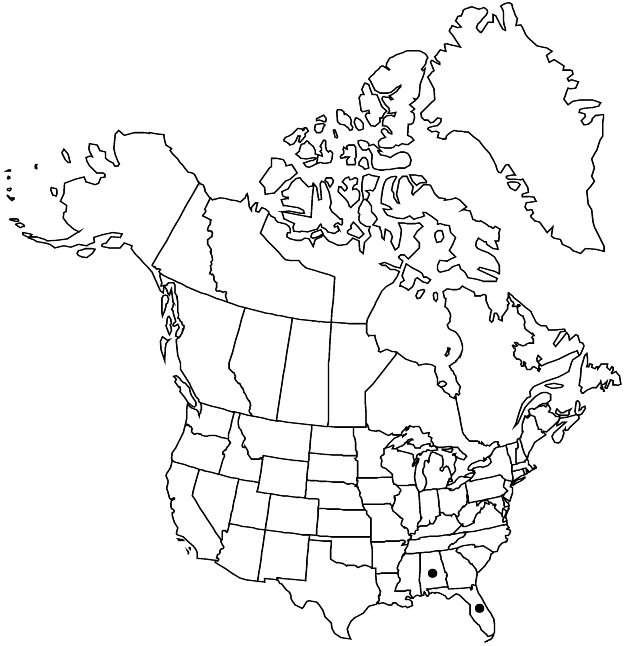Polygonella macrophylla
Bull. Torrey Bot. Club 23: 407. 1896.
Subshrubs, perennial, gynodioecious, 8–11 dm. Stems erect, simple proximally, sometimes branched distally, glabrous. Leaves persistent; ocrea margins not ciliate; blade oblanceolate to obovate or broadly spatulate, (9–)26–56(–68) × (3–)9–30 mm, base attenuate to obtuse, margins hyaline, apex obtuse, glabrous. Inflorescences (14–)30–50(–70) mm; ocreola encircling rachis, only the base adnate to rachis, apex acute. Pedicels spreading in anthesis, reflexed in fruit, 1.2–2.1 mm, much longer than subtending ocreola. Flowers bisexual or pistillate; outer tepals loosely appressed in anthesis, reflexed in fruit, white, pink, or red, obovate, 1.6–2.4 mm in anthesis, margins entire; inner tepals loosely appressed in anthesis, reflexed in fruit, white, red, or pink, obovate, 1.7–2.8 mm in anthesis, margins entire; filaments dimorphic; anthers white or yellow; styles and stigmas 0.3–0.6 mm in anthesis. Achenes included, yellow-brown, 3-gonous, 3.1–4.1 × 1.5–1.9 mm, shiny, smooth. 2n = 28.
Phenology: Flowering Oct.
Habitat: Sand pine-oak scrub ridges
Elevation: 0-70 m
Discussion
Polygonella macrophylla is known only from the Gulf Coast from Franklin County, Florida, westward to Baldwin County, Alabama. Two flower-color morphs exist. Two populations in the vicinity of Carrabelle, Florida, are red-flowered. All other populations produce white or pink flowers. P. O. Lewis (1991b) showed that expected levels of genetic diversity are much lower in white-flowered populations than in red-flowered ones, possibly due to lack of gene flow among populations and high levels of inbreeding. Morphological data suggest that P. macrophylla is most closely related to the more widespread P. polygama (Lewis and D. J. Crawford 1995).
Polygonella macrophylla is in the Center for Plant Conservation’s National Collection of Endangered Plants.
